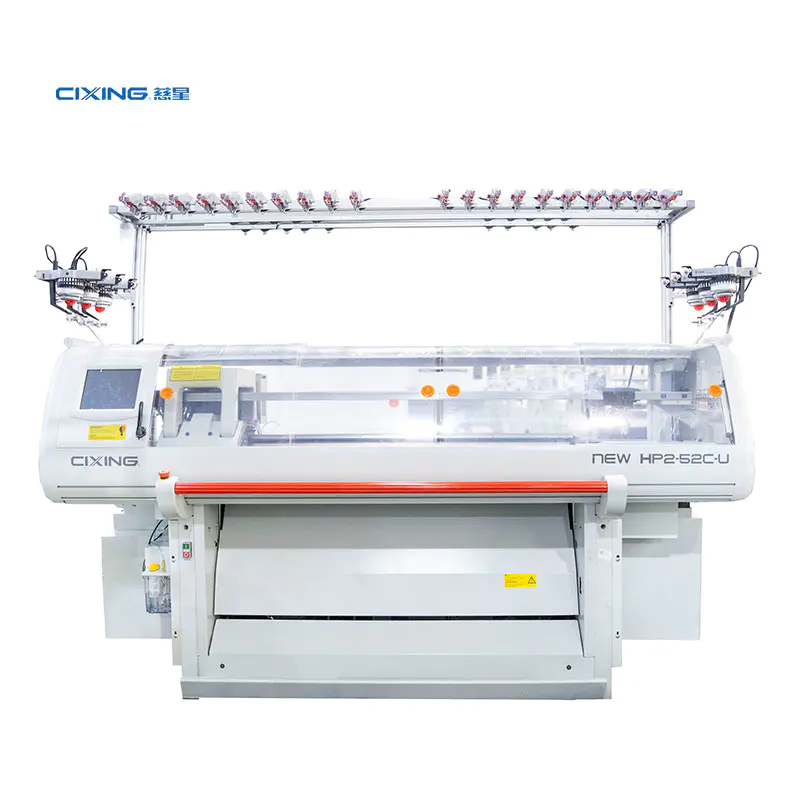Flat Knitting for Beginners: Tips and Tricks for New Operators
2025-01-22
Flat knitting is an essential technique in the textile and garment industries, widely used for producing flat, flexible, and seamless fabrics. If you’re new to flat knitting, understanding the fundamentals and mastering a few tricks can set you on the path to success. This guide will walk you through tips and tricks to improve your skills as a beginner operator.
What is Flat Knitting?
Flat knitting involves creating fabric by forming loops of yarn on a flat surface, using a knitting machine or hand-operated tools. Unlike circular knitting, which produces tubular fabrics, flat knitting creates two-dimensional, flat pieces of material, making it ideal for items like sweaters, scarves, and custom-fit garments.
Essential Tips for Flat Knitting Beginners
1. Understand Your Flat Knitting Machine
For new operators, getting to know your machine is critical:
- Read the Manual: Familiarize yourself with the components, including the carriage, needle bed, tension knobs, and stitch selectors.
- Practice Threading: Learn how to thread the yarn properly to avoid tension issues.
- Maintenance: Regularly clean and lubricate the machine to ensure smooth operation.
2. Start with Basic Patterns
Choose simple knitting patterns that focus on basic stitches like plain (jersey) or rib stitch. Avoid complex designs until you’re comfortable with machine operations.
3. Set the Right Tension
- The tension setting determines the density and elasticity of your fabric.
- Experiment with different tensions to find the best settings for your yarn type and desired result.
- Always knit a test swatch to check the tension before starting a project.
4. Use Quality Yarn
High-quality yarn is easier to work with and produces better results. Look for smooth, uniform yarns that are compatible with your machine. Avoid overly textured or stretchy yarns as they may cause uneven stitches.
5. Master the Casting On and Binding Off
- Casting On: Practice even and secure cast-on techniques to create a clean edge.
- Binding Off: Learn to bind off smoothly to prevent loose or uneven edges in your fabric.
6. Monitor Yarn Feed and Tension Consistently
Keep an eye on the yarn feed during operation. Irregular feeding can lead to dropped stitches or inconsistent fabric.

Troubleshooting Common Issues
1. Dropped Stitches
- Cause: Insufficient tension, misaligned needles, or loose yarn feeding.
- Fix: Adjust tension settings, re-align needles, and ensure consistent yarn feeding.
2. Uneven Stitches
- Cause: Incorrect tension or improper yarn selection.
- Fix: Test tension with a swatch and use suitable yarn for your project.
3. Jammed Needles
- Cause: Yarn caught in the needle bed or debris in the machine.
- Fix: Clean the needle bed and remove obstructions before continuing.
Advanced Tips for Progression
1. Experiment with Stitch Patterns
Once you’re comfortable with basic stitches, try incorporating textured stitches like cables, lace, or jacquard to enhance your projects.
2. Learn Shaping Techniques
- Practice short-row knitting to create contours and shapes in your fabric.
- Master increasing and decreasing stitches for custom garment designs.
3. Explore Colorwork
- Use multiple yarns to add stripes, patterns, or intricate designs to your fabric.
- Ensure smooth yarn transitions to avoid tangles.
4. Join a Knitting Community
Engage with other knitters—online or in person—to exchange ideas, tips, and feedback. This is a great way to stay motivated and inspired.
Safety Tips for Flat Knitting Operators
1. Avoid Loose Clothing: Prevent accidents by wearing fitted clothing while operating a machine.
2. Proper Posture: Sit comfortably to reduce strain during long knitting sessions.
3. Handle Needles with Care: Watch for sharp edges to avoid injuries.
Conclusion
Flat knitting can be both a rewarding and creative skill for beginners. By understanding your machine, mastering the basics, and progressing to advanced techniques, you’ll be able to create beautiful and professional-quality fabrics in no time. Remember, practice makes perfect—so keep experimenting and enjoy the process!
Do you have questions about flat knitting or tips to share? Let us know in the comments!


